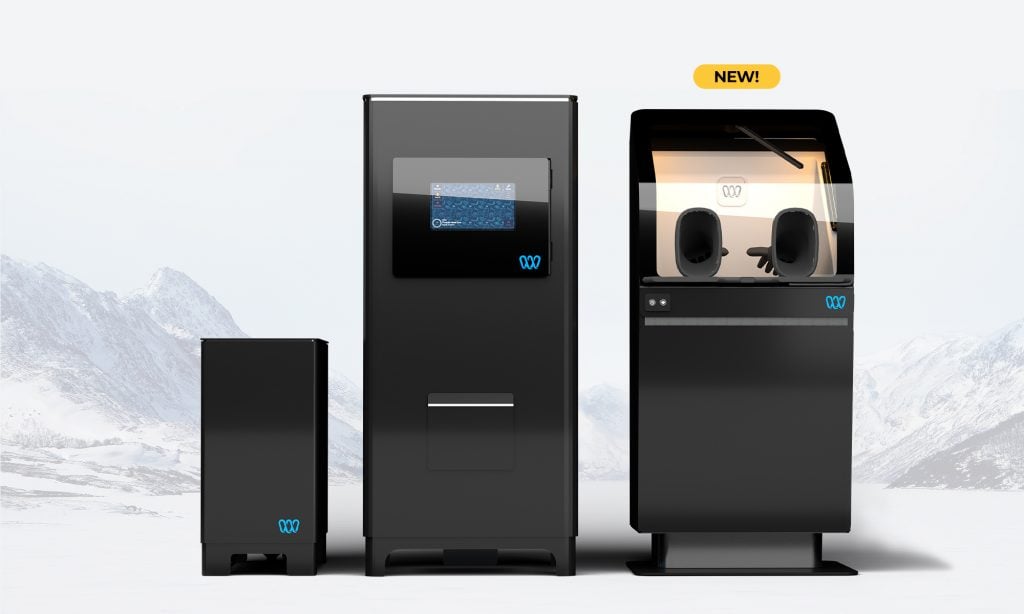
Wematter announced the Density Gen II post-processing unit, and it uses an unusual two-step process for cleaning SLS 3D prints.
The Swedish company has been developing an industrial SLS 3D printer since their founding in 2014, and in recent years has been able to deliver the Gravity SLS 3D printer to customers, drawing investor confidence.
The machine is targeted at mid-size operations where the volume of 3D prints is sufficient to justify the purchase of in-house SLS equipment. Wematter is able to produce considerable quantities of parts using the large 300 x 300 x 300 mm build volume in the device.
The Gravity device uses the SLS process, where a flat bed of thermoplastic powder is selectively sintered by a powerful laser, layer by layer. When an SLS job completes, it’s buried in a chamber full of unused powder and must be extracted.
Any completed SLS 3D print must be extracted from the powder and then cleaned off. Stray powder will cling to the surface of the print, as well as reside in niches created by the object’s geometry.
SLS 3D prints therefore always require post-processing. Typically the dusty prints are hauled into a secondary machine that would have an airbrush-style wand to blow powder off the part. The powder would be collected and potentially reused in subsequent print jobs.
I’ve done this process myself, and it is quite tedious, particularly on complex geometries, where you’re never certain if you’ve actually blown away all of the loose powder.
That was for one 3D print, but imagine if you’re using the Gravity 3D printer and producing, say, 60 parts per day, each of which requires individual cleaning effort. At 10 minutes per item, that many hours of post-processing work to do each day.
Wematter’s new Density Gen II post-processing unit includes a unique two-step cleaning process for SLS 3D prints.
The first stage is cleaning by water jet. Pressurized water very quickly blows off large amounts of loose powder, far more quickly than you could do with air. It’s simple physics: water carries a lot more momentum, and that momentum is transferred to the loose powder.
The second stage, done after powder is washed away with the water jet, is to use a compressed air gun to dry the part and blow off any final loose powder. This results in a very clean and dry 3D print in far less time than using air alone.
Wematter CEO Robert Kniola explained:
“By first using water to remove excess material with Density, you can clean 3D models quickly and safely compared to using only compressed air. In comparative tests, we have in some cases measured a reduction in the finishing time by up to 83%. From one hour to ten minutes per batch of 3D prints.”
Even better is that the water and air systems are closed systems: the water is recycled, and the compressor is onboard and does not require an external source of compressed air.
Wematter said the Density Gen II can also be used to remove wax supports or PolyJet supports for 3D prints made using other 3D printing processes.
This is quite an innovation, but one aspect is puzzling: typically unused powder is recycled, as post-processing gear collects the powder where it can be re-routed back into the production stream. But in the Density Gen II the powder will be washed away by water, and it’s not clear whether this wet powder could be recycled in the same way. It appears that loose powder is collected in a filter, and it’s not clear what happens then.
If not, then the cost of using the Density Gen II will have to include the loss of some powder. On the other hand, it may be that the labor savings due to the speed advantage outweigh the cost of lost powder, making it economical to use.
Via Wematter
